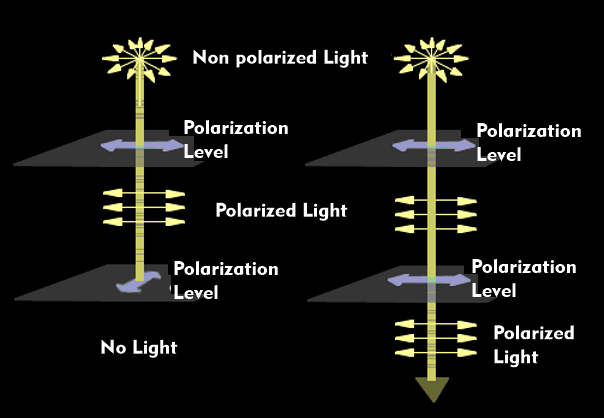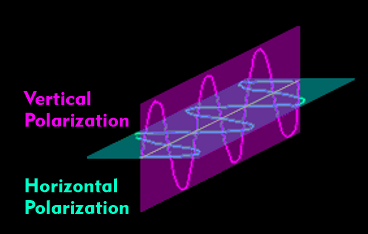polarization
Polarization of light
Light oscillations and electromagnetic waves propagate in their wave motion in arbitrary oscillation planes. With polarization it is possible to filter out the oscillations in such a way that their propagation takes place only in one oscillation plane. Polarization can be achieved by reflection, which requires a certain angle of reflection at which the direction of oscillation of the reflected light beam is aligned in one plane. It can also be done by absorption. In this polarization technique, dye molecules are aligned so that they transmit light only in one plane, while absorbing it in the other planes. And the third polarization technique is scattering. The scattering technique is based on the fact that the finest dust particles or other particles can polarize light. Examples of applied polarization techniques include liquid-based displays such as TN technology, polarization glasses, polarization filters used in photography, or RF transmission, which uses horizontally and vertically polarized microwaves for different channels.Polarization of electromagnetic waves
In radio transmission, the electric field (E field lines) and the magnetic field (H field lines) are at right angles to each other. Polarization is defined as the direction of the electric field. This can be vertically aligned and is therefore perpendicular to the earth's surface, or horizontally aligned and is parallel to the earth's surface. In this context, one also speaks of linear polarization. For example, conventional broadcasting with amplitude modulation uses vertical polarization, whereas the radio waves for FM broadcasting and TV transmissions in most countries are horizontally polarized, as can be seen from the position of the antenna. Vertical polarization is more suitable for mobile reception because the antennas are mounted vertically and rod antennas can also be used. Linear polarization can likewise be oblique at a certain angle of plus or minus 45°. However, waves can propagate not only vertically and horizontally, but also circularly. Viewed from the antenna, the wave can rotate clockwise or in the opposite direction. This is called circular polarization or circular polarization, which can be clockwise or counterclockwise, Right Hand Circular Polarization( RHCP) or Left Hand Circular Polarization( LHCP). aves Circularly polarized waves are generated with two antennas at right angles to each other, radiating two transmit signals 90° out of phase. The receiving antennas must have the same circular polarization, otherwise losses of 20 dB to 30 dB occur. Circular polarization is used where the receiving antenna changes in its plane of polarization. This can be when the receiving antenna is not stationary with respect to the transmitting antenna, as in contactless smart cards, RFID, and radio tags. Satellite antennas can be designed to transmit and receive in one polarization mode or transmit and receive in different polarization planes. This allows one antenna to transmit differently polarized frequencies. Antennas that support circular polarization such as RHCP and LHCP are called orthogonal antennas because the antenna elements are at right angles to each other.


